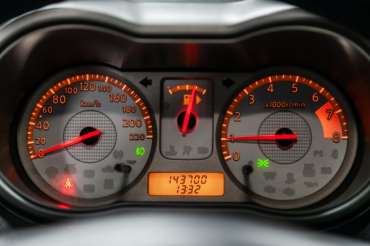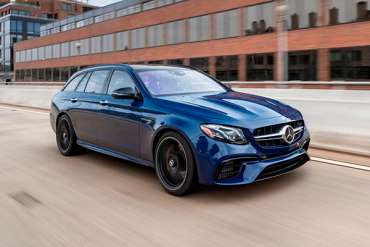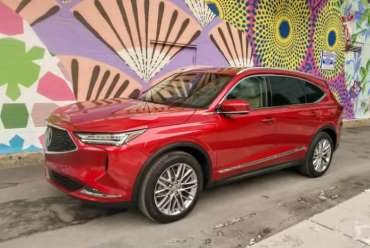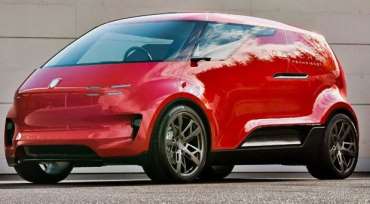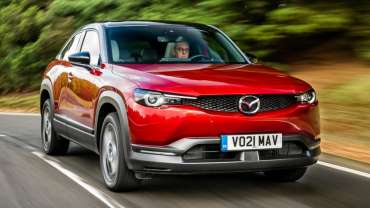
Worldcarblog.com
Which cars most often return mileage
Mileage recovery is one of the most common scams on the used vehicle market that can pretty much damage the customer. It is so common that now when buying a used car, it is understood that what is written on the kilometer-hour is certainly not true. That is why it resorts to other checks that could reveal real mileage, such as the wear of certain parts that are most often used - seat belts, seats and the like. Although these parts can be replaced.
In the EU, drivers usually change their cars every three to five years, which means that they buy a newer car at least two to three times in ten years. So, it is clear that this is a very large market and an extremely diverse offer, both in terms of prices and mileage.
In our country, the situation is much different, because the average age of vehicles in Serbia is as much as 17 years. Almost all imported cars have their mileage returned in order to achieve the best possible price.
It is known that in the EU, mostly mileage is covered, so it is not surprising that the average driver in Germany covers more than 60,000 km a year, often more. When, after 3.4 years of use, he decides to replace it, although he is still "young" in terms of age, such a car can stand on the watch of more than 200,000 km. As such, it cannot be worth as much as it would cost to write on a watch, say 120,000.
This is where sellers enter the scene, hunting in the dark by returning the mileage before the sale. They also benefit from the fact that identifying the person responsible for changing the mileage is legally very complicated.
We have even heard of the case of a car owner who returned the mileage to 124,500 on all vehicles on offer, because, as he said, he cannot remember for every car he sells, and this way when customers call and ask him, he always has a ready "correct" answer.
CarVertical, the largest platform for checking car history, did a survey to find out which cars are most often cheated with mileage. They analyzed more than 570,000 reports on the history of cars, and the research also showed how much the buyers of vehicles with returned mileage lose.
The absolute dominance of diesel
The assumption that diesels travel several kilometers proved to be correct, which is why most fraud with mileage happens on cars with a diesel engine. Their share is almost three quarters (74.4%) of all reports on the history of cars with observed changes per kilometer-hour.
As expected, the fewest cases of mileage were observed on electric and hybrid cars, only 0.6%.
An easy scam for big money
The main reason why mileage scams are so common among car scammers is earnings. Namely, the return of mileage can be done very cheaply and quickly, even on well-protected cars with modern software.
On the other hand, depending on the age and condition of the second-hand car, returning the kilometers can raise the price of the car by up to 25%, according to the research of carVertical.
Kilometers are most often returned on older premium cars from German manufacturers, such as Mercedes, BMW and Audi, and on average about 80,000 kilometers are lost.
In vehicles manufactured between 2016 and 2020, an average of about 36,000 kilometers were "taken off". Research has shown that frauds with kilometers can sometimes lead to a return of more than 200,000 km.
Conclusion
All this shows that buying without a known vehicle history is a risk that can cost you up to a quarter of the price of the vehicle. A service history report can reveal some facts that will help you avoid a poorly maintained car, but also provide a certain advantage when negotiating.
In any case, mileage scams are most common in Central and Eastern European countries, while they are less common in Western countries.
2021 Mercedes-AMG E 63 S Wagon Unparalleled Exclusivity
Mercedes-Benz does not break down its end-of-year sales by model, but we know that the 2021 Mercedes-AMG E63 Wagon is a rare car; it’s likely more exclusive than most Ferrari and Lamborghini models. “Generically speaking [E63 S Wagon owners] are high income and are very much brand and model-loyal,” a Mercedes spokesperson told CarBuzz. “[They] do not differ so much from a typical AMG customer; rather, the E63 S Wagon buyer is more of a superlative of these characteristics.”
Seeing an E63 S Wagon on the road is already rare sight, especially in the wagon-phobic US market, but Mercedes gives its customers a chance to be even more unique. Mercedes offers the Designo Manufaktur program, which allows owners to “have a car painted in a historic Mercedes-Benz color, painted to match a color sample.” Think of it like Porsche’s Paint to Sample Program but less saturated on social media.

“Nearly any color is possible through this program, from various shades of purple to bright greens and yellows,” Mercedes told us. More often than not, these colors are a one-of-one, making them highly coveted on the second-hand market. “Only a few dozen E63 S Wagons go through this special process each year,” including the pre-facelift 2020 E63 S Wagon pictured here wearing a Designo Manufaktur Steel Blue exterior paint with an AMG Black Exclusive Nappa leather interior.
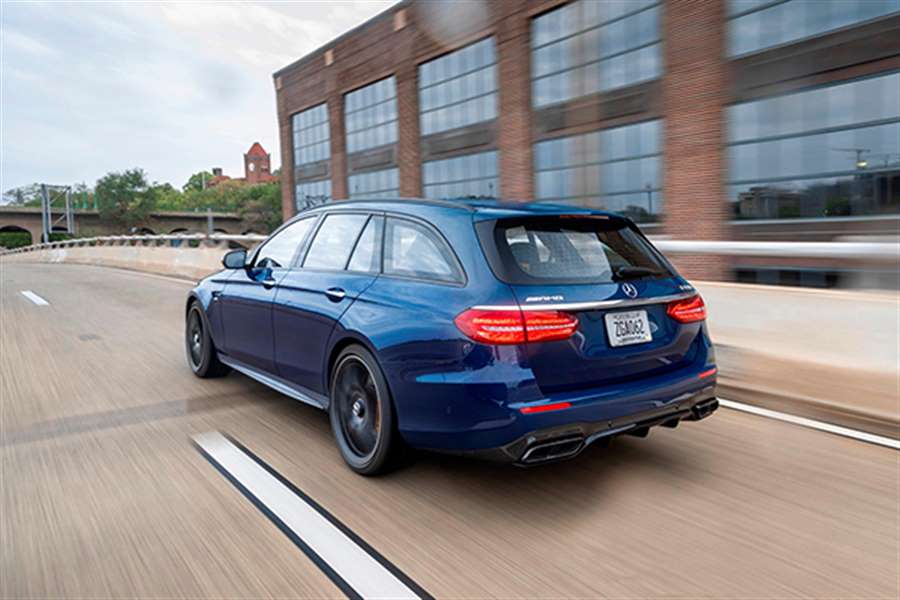
Audi offers something similar through its Audi Exclusive program, which allows owners to order virtually any color on their RS6 Avant. But unlike Mercedes, which only sells a handful of custom-painted wagons per year, Audi’s program is completely booked for 2021.
“At AMG, I think it’s fair to say that we not only appreciate strong competition, but we seek it out,” Mercedes commented about the recent wagon rival from Audi. “We compete in race series around the world (F1, IMSA, DTM, etc.), but we also compete in numerous competitive segments in the US market and others. Competition is good for the industry as a whole and helps to bolster the wagon segment, for which we set the benchmark.”
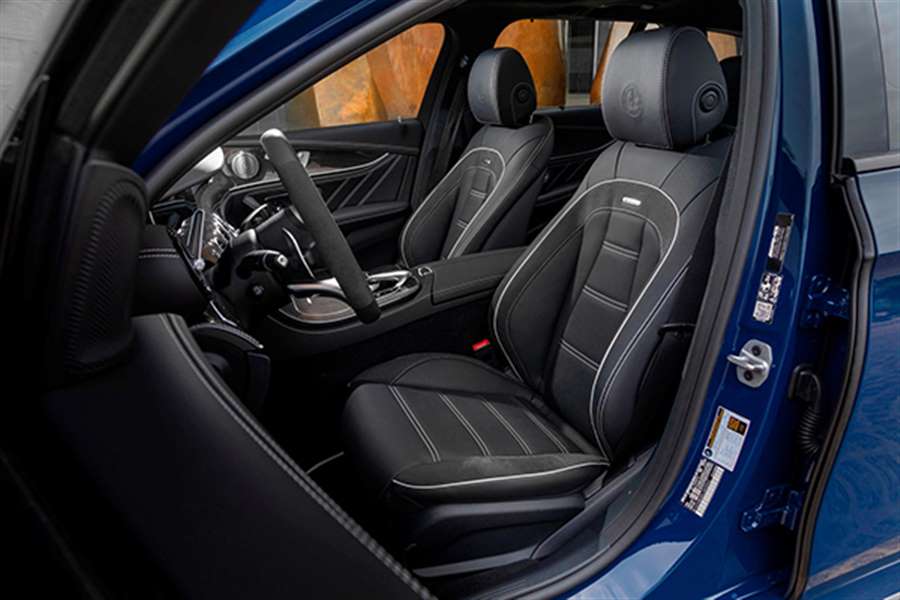
There’s no arguing that the introduction of the RS6 Avant to the North American market hasn’t gone unnoticed by enthusiasts, but the E63 S is heavily facelifted for the 2021 model year to take on the competition.
“The overall goal was to make the E63 better in a number of measurable ways. By bringing over knowledge we gained in the development of other products (i.e., the AMG GT 4-door).”
The most notable difference between the 2020 E63 and the facelifted 2021 model, aside from the styling (pictured above), is the suspension. “We revised some of our bushing stiffness and adjustable suspension logic in an effort to make the car both more comfortable for around-town driving, and more sporty on a back road or a racetrack. The tuning has been affected by changing the bushing stiffness and changing the logic for the air springs and variable dampers.”
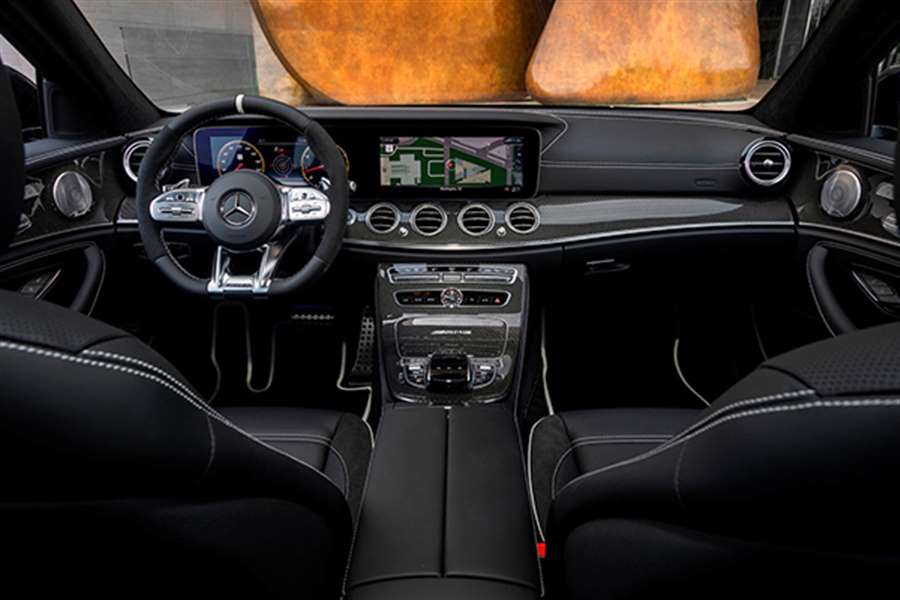
We’ll have to evaluate the effectiveness of AMG’s suspension changes in our upcoming E63 Wagon review. Audi typically places a heavy emphasis on comfort, even on the RS models, so it might be tough for AMG to challenge in this area.
STATISTICS SAYS: For more and more accidents, it is the fault of drivers who drive slowly!
Many will drive slowly because they are unsure of their driving skills, and some do so because they have loaded the vehicle or towed a trailer. Unfortunately some of them are becoming part of a statistic that says drivers driving below the speed limit bear part of the responsibility for more and more accidents!
The British Ministry of Transport keeps all kinds of statistics, and one is the one about drivers who drive far below the speed limit. It was concluded that last year 26 road users were killed and seriously injured precisely because of the slower drivers. Namely, such behavior encourages other drivers to overtake in situations where it is dangerous, do not respect the safety distance and do other dangerous things in traffic.
Many traffic experts agree that driving too slow creates frustrations for other drivers and will provoke them to dangerous actions. Many will drive slowly because they are unsure of their driving skills, and some do so because they have loaded the vehicle or towed a trailer.
Either way, respect the speed limits and if a column is forming behind you because for some reason you are driving slowly, take the first opportunity when it is safe and stand aside and miss the others. Of course, there are incomparably more accidents due to fast driving, but also slow driving causes frustration of other drivers - especially those who have to arrive somewhere on time.
2022 Acura MDX: 5 Things We Like and 3 Things We Don’t
The 2022 Acura MDX is a fresh take on a luxurious three-row SUV that squares off against strong rivals such as the Lincoln Aviator, Lexus RX, Genesis GV80 and Infiniti QX60. Where the new and improved MDX shines is in value. Even with a starting price of more than $47,000, the 2022 MDX comes standard with loads of safety features and updated tech touches, including wireless Apple CarPlay and Android Auto.
Inside, Acura’s engineering team focused on creating a more functional and flexible place to spend your time. The center seat in the second row can be used either like a bench seat, which accommodates three car seats across, or removed so the outboard seats become captain’s chairs. There has also been a substantial upgrade to the MDX’s infotainment system, though this also proved controversial during our test.
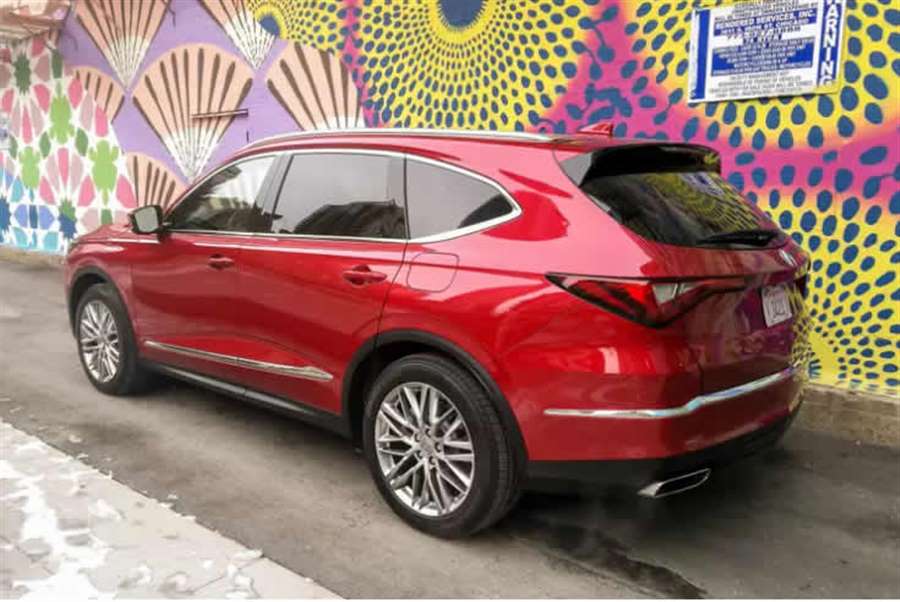
You can click the related link above to read our complete review of the 2022 Acura MDX. Or for a quick recap of this mid-size luxury SUV’s best attributes — plus some items that need a rethink — keep reading below.
Things We Like
1. Smooth V-6, Improved Transmission
Under the hood is a 3.5-liter V-6 that sends 290 horsepower to the front wheels courtesy of a 10-speed automatic transmission; all-wheel drive is optional. This is a smooth and refined powertrain, and the gearbox in particular is a solid step forward from the previous nine-speed automatic. There is no hunting for gears or hesitation in acceleration when powering through city or highway traffic.
2. More Standard and Optional Safety Features
The previous Acura MDX already came standard with an impressive amount of active safety equipment, such as automatic emergency braking, forward collision warning, adaptive cruise control and lane keep assist. Newly standard safety items include a driver attention monitor, pedestrian detection, traffic sign recognition and Acura’s Traffic Jam Assist. This system controls braking and acceleration at slow speed and works to a complete stop, all while maintaining a safe distance behind the vehicle ahead. The aim is to reduce driver fatigue during traffic slowdowns.
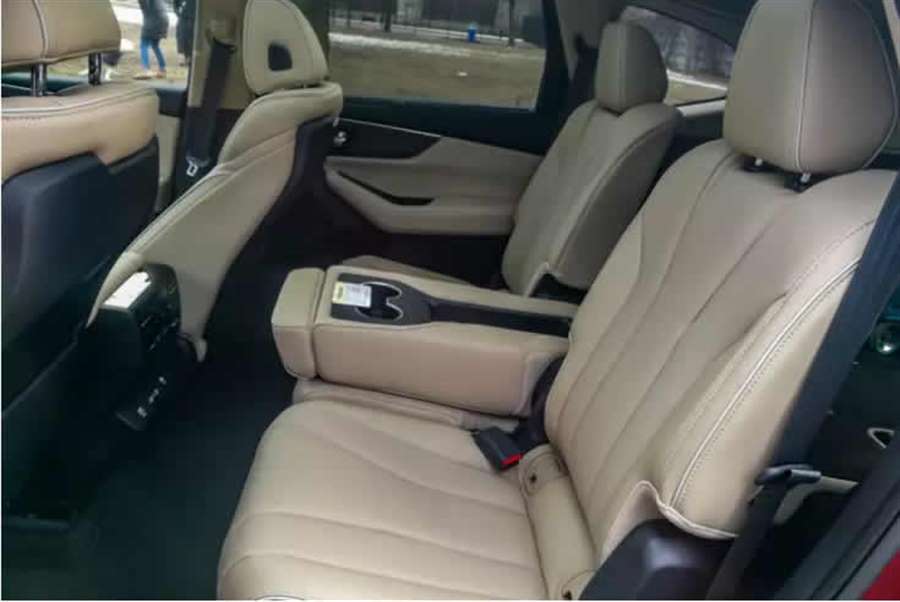
3. Seating Flexibility
The MDX still offers three rows of seating and space for up to seven people onboard. Yet, for the 2022 model year, the second row packs some surprises. The middle seat can be removed to create a nearly 14-inch wide walkway to the third row. This creates more stretch-out space for second-row occupants, and makes it easier to access the third row. Along these same lines, with the push of a button the second-row seats collapse and slide forward to aid anyone climbing into the rear-most seats.
4. Creative Cargo Space
Like the improved seating capabilities, Acura also turned its attention to the MDX’s cargo area. Not only is there more total space behind the third and second row than what rivals offer, the MDX has a few extra cards up its sleeve. There is a roomy underfloor storage compartment as well as a reversible cargo floor with an easy-clean plastic side. Need to haul muddy hiking gear or a particularly dusty antique? Flip the cargo floor and don’t worry about dirtying the trunk’s carpet.
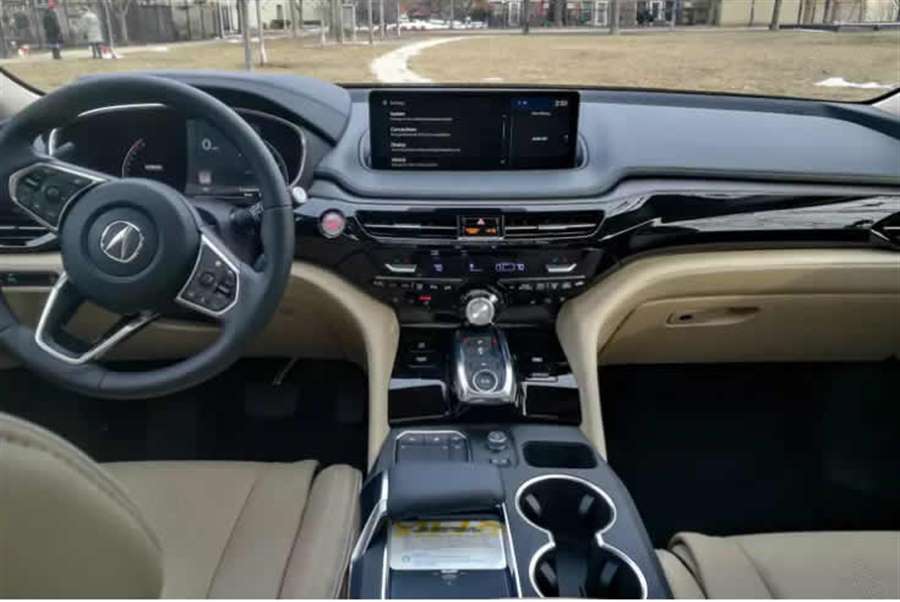
5. Improved Infotainment — to a Point
The good news is that the 2022 Acura MDX has a more intuitive and user-friendly infotainment system than the dual-screen setup used in its predecessor. Wireless Apple CarPlay and Android Auto are now standard, and we found the Amazon Alexa voice controls very handy. The system now comes with a large 12.3-inch screen mounted on the dashboard. While the display is large and clear, things get murky when it’s time to scroll through various menus and controls. More on this in just a moment …
Things We Don’t
1. Fussy Infotainment Controls
While the MDX’s infotainment system is better than before, it still lacks an actual touchscreen. That’s right, the primary means of controlling the system is via a center console touchpad. It takes lots of patience, practice and some luck to get right (especially when you’re driving). The major pieces are all there; Acura is simply short a touchscreen to make everything perform seamlessly.
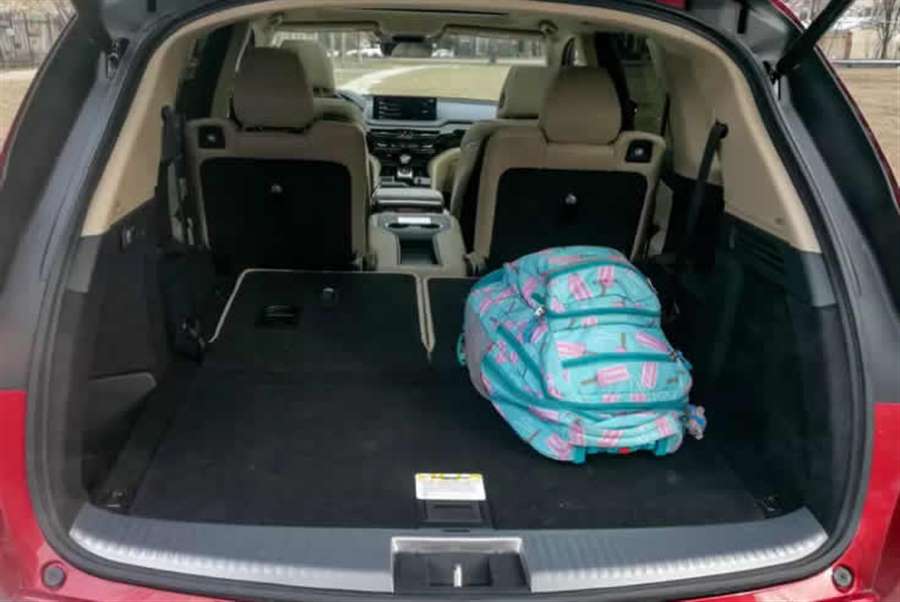
2. Third Row Remains Best Left for Kids
Getting to the third row is easier for 2022, though the space back there is still best left for kids. Anyone feeling greedy about legroom while perched in the second row will be a serious problem if the MDX is at full capacity. With a second-row seat slid all the way back, there’s not much third-row legroom directly behind it.
3. MPG Is Only OK
The Acura MDX isn’t much better or worse than its mid-size luxury SUV rivals when it comes to mpgs. It’s also not any better than the previous version. In fact, the 2022 Acura MDX is slightly less fuel efficient than the model before it. The difference is small, though it would have been nice to see the new MDX’s overall fuel economy needle move upward, not down.
Porsche has spoken out about the idea of an electric minivan
Porsche made Vision Renndienst back in 2018, and due to the popularization of electric cars, many wondered if a new surprise from Porsche would follow.
The answer was given by Porsche itself for Autoblog. They stated that the company will not embark on new excursions in terms of city cars, even if they look like a concept minivan.
Vision Renndienst
According to Index.hr, Porsche's head of global design Detlev von Platen stated that he would only participate where “it is possible to define a sports vehicle.” It is a pity because this concept would be interesting to see on the road.
Let us remind you, Renndienst was designed by Porsche in 2018, and it was shown to the public for the first time at the end of last year. The driving position is central, as in the McLaren F1, but it can carry six people.
Mazda MX-30 SUV review
"The Mazda MX-30 is a stylish electric SUV that's fun to drive and affordable"
This is the Mazda MX-30, the first all-electric model in the history of the Japanese manufacturer. It looks stylish, and in keeping with the brand's other models, it's also fun to drive.
Mazda isn't afraid to go its own way, and unlike rival car makers who are locking horns over battery capacity and range figures, the MX-30 instead gets a relatively small, lightweight battery pack. This helps it stay nimble, and Mazda reckons its 124-mile range is also enough to satisfy the driving habits of its target audience, most of whom own another car.
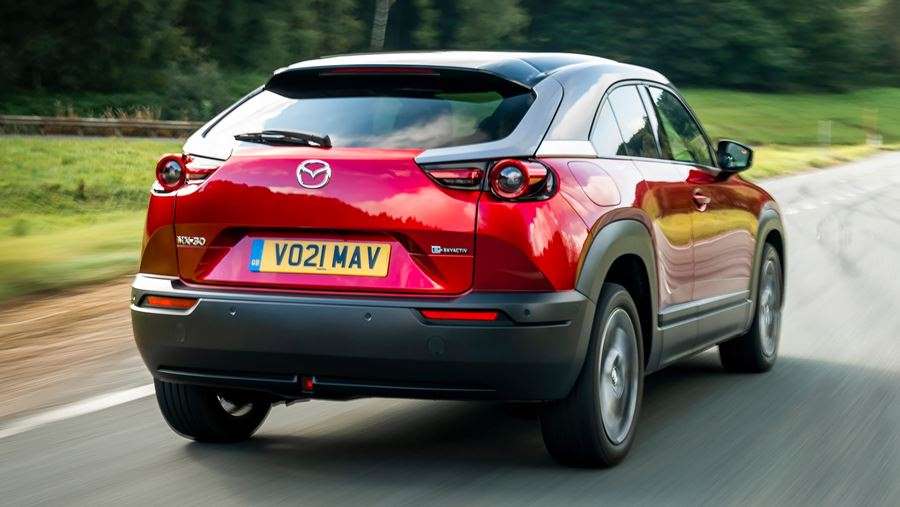
The battery has a 35.5kWh capacity, and Mazda believes using a smaller pack not only boosts handling, but also has less impact on the environment and keeps the MX-30's price down. Speaking of which, the MX-30's list price of around £27,000 (including the government grant and a home charger) is noteworthy, because it means even in the well-equipped First Edition trim it's cheaper than the equivalent higher trim versions of the MG ZS EV and Nissan Leaf.
It can be charged using a home wallbox supply in less than six hours, or topped up from 0-80% in 36 minutes using a 50kW rapid-charger. Handling is certainly a strong point; the MX-30 can flit between corners without fuss and Mazda's well-weighted steering and feelsome brakes have also made the transition from combustion to electric power intact, but with 143bhp, performance is fairly modest for an EV. Acceleration from 0-62mph takes 9.7 seconds, compared with 8.5 seconds for the MG ZS EV, and the MINI Electric feels much quicker off the mark.
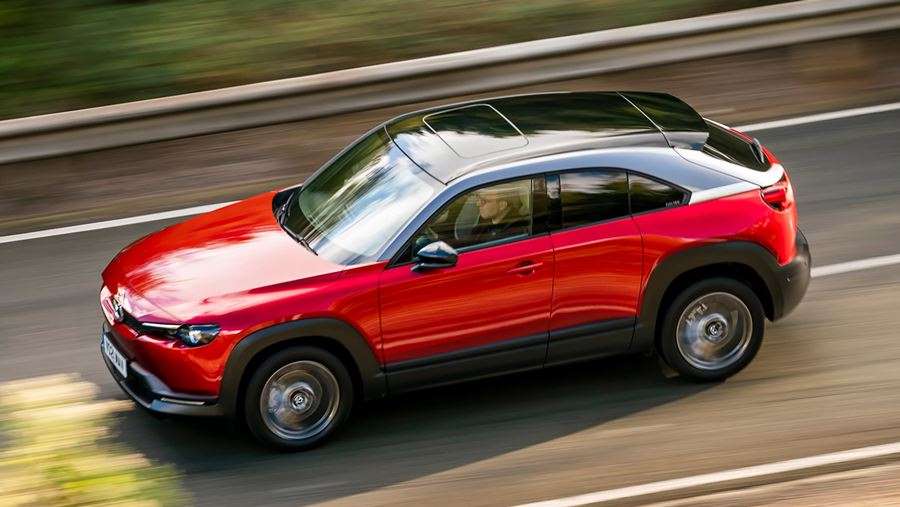
Looking like nothing else with a Mazda badge, the MX-30 features rear-opening back doors, hindering practicality somewhat. There are five sets of seatbelts but getting in and out of the rear is slightly awkward, and the back windows cannot be lowered, making it claustrophobic for rear passengers. Life is far better in the front, thanks to comfortable seats with a vegan-friendly leatherette upholstery, cork trim inserts and door trims using recycled plastic bottles. Mazda has been making some great interiors in recent years, and this is no exception.
The first 500 UK cars were all First Edition models, which came with a strong kit list including a heads-up display, sat nav and digital instruments. The standard model range comprises SE-L Lux, Sport Lux and GT Sport Tech, all of which are well equipped.
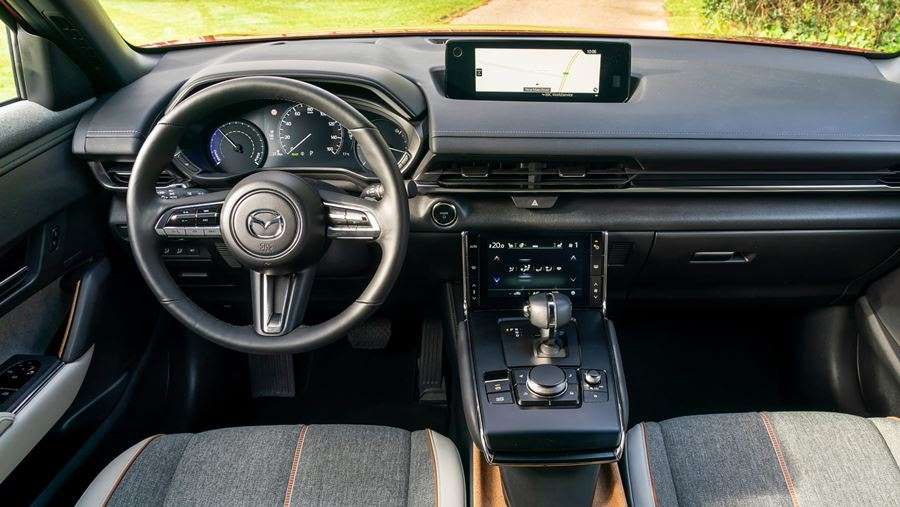
The Mazda MX-30 also bagged a five-star safety rating from Euro NCAP in 2020, with impressive crash-test results across the board. Plenty of smiles from behind the wheel, an attractive interior and low running costs will impress buyers, but they'll need to only carry rear passengers very occasionally and be happy with the car’s limited range.
MPG, running costs & CO2
Forget range anxiety and Mazda's decision to offer a smaller battery pack makes sense
As with its SkyActive petrol and diesel engines, Mazda is looking to buck common trends with its first EV. Instead of engaging in a race to fit the biggest battery pack possible, the MX-30 instead has just a 35.5kWh capacity, giving it up to 124-miles range between charges. While such a short range is easier to forgive for city cars like the MINI Electric and Honda e, it's harder to justify for a bigger one. Most rivals such as the Tesla Model Y and Volkswagen ID.4 will easily double this.
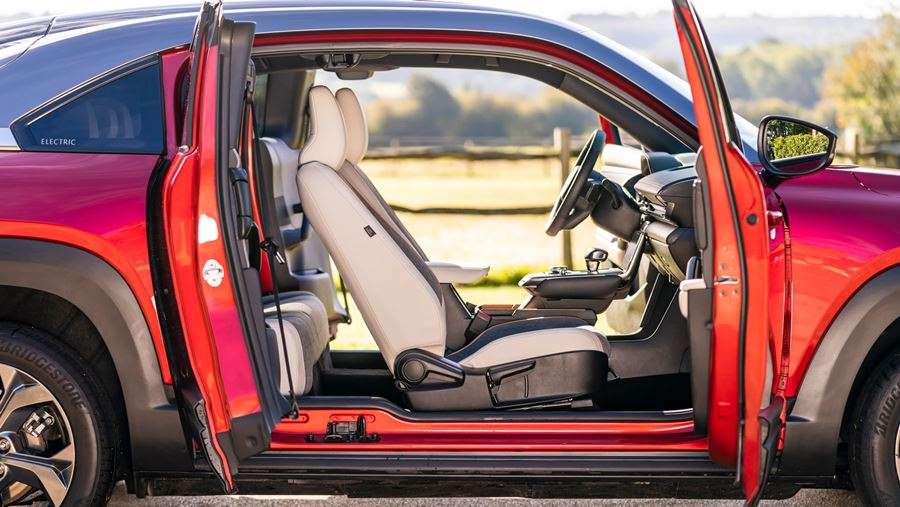
Mazda's thinking is that production of larger battery packs is bad for the environment, and that they're heavy, negatively affecting how the car drives. Mazda also points to research that 95% of the MX-30's target buyers drive less than 60 miles a day. They're the sort of drivers who are likely to tackle the school run, commute to work and drive locally to shop or see friends, rather than regularly travel long distances on the motorway. It's also likely they'll plug the car in overnight at home whenever it's necessary, and a free home charger comes as part of the deal.
A full charge takes less than six hours using a 7.4kWh wallbox, but it's also possible to charge the MX-30 at up to 50kW using a public rapid-charger and its CCS connection. Do so and the battery can be topped up from 0 to 80% in 36 minutes. The range-topping Volkswagen ID.3 offers up to 125kW rapid charging. VED (tax) is currently free for electric cars, which also enjoy the lowest rates for company-car drivers and free entry into low emissions zones like the one covering central London. There's also a major advantage for company-car drivers, thanks to low Benefit-in-Kind (BiK) liability, reducing monthly bills.
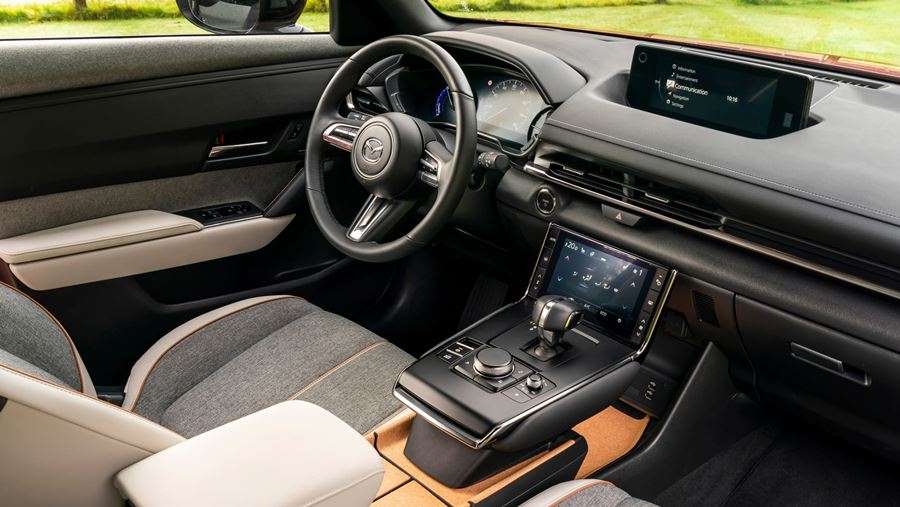
Engines, drive & performance
It doesn't have screaming acceleration, but the Mazda MX-30 is a satisfying steer
The 'MX' badge is usually reserved for Mazda's sporty models, such as the iconic MX-5 roadster, so is it deserved here? Weighing around 1,600kg, the MX-30 is certainly light compared with other electric SUVs, and this pays dividends in almost every driving situation. There's never any feeling of dragging the MX-30 around corners, instead, it's agile and quick to respond, with very little body lean. In fact, we found its handling finesse makes it almost as fun to drive as the smaller MINI Electric, even if it doesn't have as much punch when you hit the throttle. Its steering is precise and requires just the right amount of effort.
Mazda MX-30 SUV front cornering20he brakes feel natural too - not always a given in alternative fuel cars that harvest energy from braking regeneration. The strength of the electric motor's braking effect can be adjusted on the move via the paddles mounted on the steering wheel. Even in its strongest mode it doesn't quite allow for one-pedal driving, but you can learn to use it to slow the car in predictable traffic - only using the brakes for unexpected stops.
Just don't expect acceleration worthy of 'reaction videos' on YouTube as your friends are pinned back in their seats, Tesla-style. With 143bhp, the MX-30's electric motor feels more on a par with diesel rivals for acceleration, taking 9.7 seconds to get from 0-62mph. Top speed is limited to 87mph. Of course, with just one forward gear and no turbo lag, there is the benefit of smooth progress as soon as you press the throttle. You'll also notice a synthetic engine sound to help make the MX-30 feel natural for drivers.
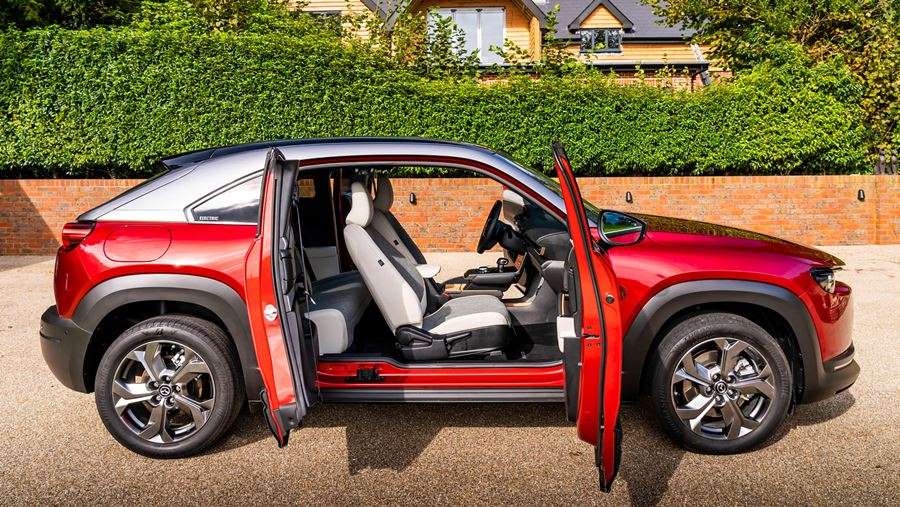
Interior & comfort
Mazda has incorporated renewable materials without any loss of quality
Mazda has long been known for its striking designs, and the CX-30 is no exception. Its interior follows the brand's recent uptick in quality adding some striking materials and features into the mix. The centre console trays and door handles are lined with cork from the bark of trees that have fallen naturally, while the door trim incorporates fibres from recycled plastic bottles. The only disappointment is some cheap plastic around the gear selector.
Its suspension is supple enough to ensure the MX-30 feels planted but doesn't bounce or skip uncomfortably around corners, so passengers should be comfortable. However, the driver will likely wish the rear windows weren't quite so sloping and dark, as they restrict over-the-shoulder visibility when manoeuvring. The mixture of touchscreen and rotary knobs for the ventilation controls also takes some getting used to.
Standard equipment is generous, including a head-up display, seven-inch digital instruments cluster, sat-nav and a rear-view camera. The First Edition trim level was available to the first 500 buyers and its design elements included 18-inch alloy wheels and light upholstery with grey cloth, stone leatherette and orange stitching. Two solid paint colours are available for free, or buyers can upgrade to a three-tone hue for around £1,000.
Following on from the First Edition, there's SE-L Lux, Sport Lux and GT Sport Tech trims. Sport Lux gets 18-inch alloy wheels, heated front seats with lumbar adjustment and keyless entry, along with the option of 'three-tone' contrasting paintwork. The GT Sport Tech range-topper features a sunroof, heated steering wheel, 12-speaker Bose stereo and front wiper de-icer, along with the option of artificial leather upholstery.
Practicality & boot space
Its rear-opening doors look cool, but hamper practicality somewhat
In a nod to the Mazda RX-8 sports coupe, the MX-30 features a set of rear-opening back doors. It’s an intriguing design, but there are compromises when it comes to functionality. For a start, they aren't as big as most rivals' back doors, and it's necessary to fold the front seat out of the way to get inside. It's also rather claustrophobic in the back of the MX-30, made worse by the fact the rearmost windows cannot be opened and a lack of kneeroom. Longer trips will be hampered by low and shallow seat bases that don't provide much thigh support to taller passengers but headroom is adequate.
The MX-30 has a sloping rear profile and stubby tail, with almost no overhang behind the rear wheels, so boot space isn't much better than in a supermini. There's up to 366 litres behind the rear seats but this reduces to 341 litres in the range-topping GT Sport Tech version.
It's possible to split and fold the 60:40 rear seats, but there aren't many clever features like an adaptable boot floor or hidden compartments, and space extends to 1,171 litres. With the engine bay taken up by the electric motor, there's also no 'frunk' like you'll find in some larger EVs. It's also likely the electric Mazda will follow the path of other small EV's and be deemed unsuitable for towing.
Reliability & safety
Owner satisfaction and safety are both strong areas for Mazda
Mazda has an excellent reputation amongst owners, who voted the Japanese brand into fourth place in our 2020 Driver Power satisfaction survey. They are impressed across the board, and find the interiors well screwed together, while running costs are also low. However, practicality was one area where improvement was deemed necessary, with more child-friendly features and flexible seating common requests.
Being an all-new model, there's no data yet on how the MX-30 will fare, but given Mazda's typical attention to detail and its new EV powertrain, we'd be surprised if it wasn't one of its most reliable models yet.
The MX-30 is certainly fitted with the latest safety tech, from autonomous emergency braking and lane-keeping, to a system that monitors the driver's attention levels. In the event of an accident, e-Call with GPS can also inform the emergency services and provide them the vehicle's exact location.
It all helped the MX-30 achieve a five-star safety rating from Euro NCAP, with impressive scores of 91% and 87% in the adult and child occupant protection categories respectively.
Manthey Porsche 718 Cayman GT4 MR
Manthey Racing is one of the most prominent names in the world of racing on the Nurburgring Nordschleife, and is also known for tuning Porshe cars. The new creation is the 718 Cayman GT4 MR, which is focused on improving racing performance.
Manthey has made minor changes to the body of the 718 Cayman GT4, there is now a set of protective grilles for air intakes, air deflector, new spoiler mounts and the like. The car received a set of forged wheels with "Y" shaped arms and a gold finish.
The suspension and brakes were improved, but the engine remained the same. It is a 4.0-liter 6-cylinder boxer engine that delivers 414 hp and 419 Nm of torque. From the 2021 model year, customers can get a 6-speed manual or seven-speed automatic transmission.
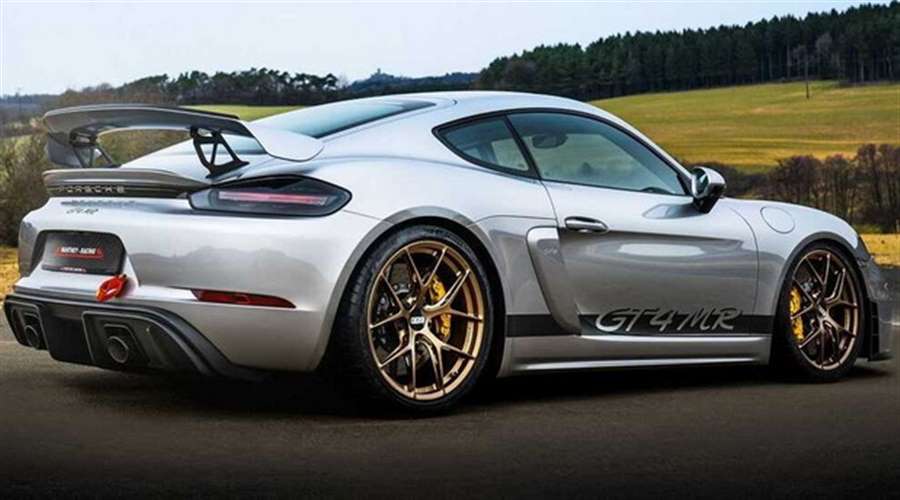
Equipped with a manual transmission, the standard GT4 accelerates from 0 to 100 km / h in 4.4 seconds and reaches a top speed of 303 km / h.
If anyone wants a more powerful Cayman GT4 directly from Porsche, then one should wait because the 718 Cayman GT4 RS has already been seen during testing. It looked aggressive with additional vents and a large spoiler, and its engine reportedly develops more than 500 hp. The Cayman GT4 RS is expected this year.

